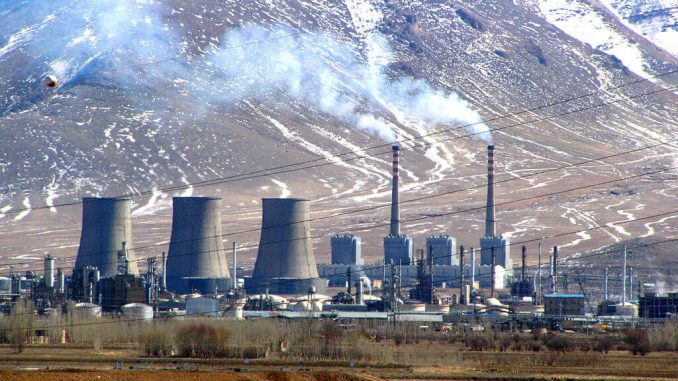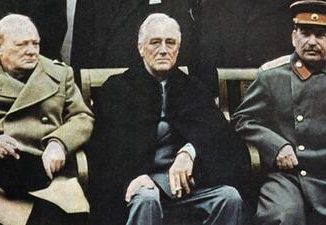
| Published June 26, 2025
📰 What’s happening
1. U.S. may ease sanctions and assist Iran’s non‑enrichment nuclear program
A CNN report claims the Trump administration is considering easing sanctions and helping Iran develop a civilian (non‑enrichment) nuclear power program—potentially facilitating access to $20–30 billion in investments. The U.S. reportedly wants Gulf Arab partners to foot the bill, while Iran must agree to halt uranium enrichment.
2. Military strikes and diplomatic spin
Over the weekend, U.S. and Israeli airstrikes targeted multiple Iranian nuclear sites, which officials claim set back Iran’s nuclear progress by only a few months—not destroyed it. Secretary Trump has floated the idea of easing oil sanctions to assist Iran’s reconstruction, even as Iran increases military rhetoric and pulls back IAEA cooperation.
🇺🇸 What this means
-
Strategic pivot: The U.S. appears to be blending continuing “maximum pressure” with more incentives—a hybrid of military deterrence and diplomacy.
-
Diplomatic gambit: Offering civilian nuclear cooperation is a big shift, aiming to lure Iran back to the negotiating table—but only if they cease enrichment.
-
Key hurdles: Iran has long defended its sovereignty, stating enrichment is non‑negotiable. Gulf Arab funding is uncertain. Congressional approval and regional trust also pose major challenges.
🛫 Overview of the Briefing
-
Participants: Secretary of Defense Pete Hegseth and Joint Chiefs Chair Gen. Dan Caine spoke at the Pentagon on June 26 to address questions about the effectiveness of the strikes
-
Military Tactics & Deception:
-
The strikes involved seven B‑2 stealth bombers deploying fourteen 30,000‑lb GBU‑57 bunker‑busters at Fordow, Natanz, and Isfahan, supported by submarine‑launched Tomahawks and decoy aircraft for diversion.
-
The mission was described as “the largest B‑2 operational strike in U.S. history”.
-
-
Damage Claims:
-
Hegseth and Caine called the operation “devastating” and “historically successful,” stating all three sites suffered “extremely severe damage” and implied Iran’s nuclear capabilities were “obliterated”
-
However, Hegseth acknowledged preliminary DAR intelligence assessments were “low confidence” and “preliminary”.
-
-
Intelligence Discrepancies:
-
A leaked preliminary DIA report suggested the program was only delayed by months, not destroyed.
-
In contrast, CIA assessments—with presumably higher confidence—continued to support “years-long impact,” a position echoed by Trump and Ratcliffe .
-
-
Media & Leak Response:
-
Hegseth criticized press coverage focusing on leaked reports, calling it a distraction meant to “undermine” the mission.
-
He and other officials also revealed footage and testing videos of the bunker-buster bombs to justify their destructive potential.
-
-
No Retaliation Detected Yet:
-
Gen. Caine emphasized that no surface-to-air or fighter interceptions occurred, and there was no immediate Iranian military response
-
⚠️ Areas of Concern & Uncertainties
⚠️ 1. Trustworthiness of Iran’s Commitment
Iran has a history of delaying or obstructing IAEA inspections, and while it may agree to halt uranium enrichment on paper, verifying compliance is difficult—especially after recent pullbacks in cooperation.
⚠️ 2. Gulf States’ Willingness to Fund
The plan reportedly counts on Gulf Arab allies funding $20–30 billion for Iran’s civilian nuclear program. That’s politically sensitive given regional hostilities—especially from Saudi Arabia, UAE, and Israel.
⚠️ 3. Risk of Dual-Use Technology
Even non-enrichment nuclear tech (like reactors and fuel cycle infrastructure) can be repurposed for weapons development. There’s a long-standing global debate about how “civilian” such programs truly are.
⚠️ 4. Domestic U.S. Political Opposition
Any deal easing sanctions on Iran could trigger strong backlash in Congress and from think tanks, especially those citing Iran’s human rights abuses, regional aggression, and ballistic missile activities.
⚠️ 5. Iran’s Enrichment Demand
Iran may refuse any deal that bans enrichment, claiming it’s their sovereign right under the Non-Proliferation Treaty (NPT). That could stall talks or render the proposal unworkable.
⚠️ 6. Weakening of Deterrence Post-Strikes
Recent airstrikes only delayed Iran’s program by a few months. Offering incentives now might be seen by critics as rewarding bad behavior, encouraging further nuclear brinkmanship.
 Bottom Line: U.S.–Iran Sanctions Shift & Pentagon Briefing
Bottom Line: U.S.–Iran Sanctions Shift & Pentagon Briefing
The U.S. appears to be pursuing a dual-track strategy: military deterrence through high-precision strikes, paired with diplomatic signaling via proposed sanctions relief and civilian nuclear cooperation—if Iran halts uranium enrichment.
The Pentagon briefing confirmed the tactical success of the strikes but left strategic outcomes ambiguous, as internal intelligence assessments conflict over whether Iran’s nuclear program was merely delayed or decisively crippled.
Meanwhile, easing sanctions and offering civilian nuclear aid may signal a potential policy pivot—but it’s fraught with risks: Iran’s trustworthiness, funding gaps from Gulf states, U.S. domestic pushback, and the chance Iran exploits the deal to buy time.
Ultimately, this situation remains highly fluid, with no clear resolution yet—only layered geopolitical chess moves, lingering military tension, and fragile hopes of diplomatic engagement.
SOURCES:ZEROHEDGE – US Reportedly Mulls Easing Iran Sanctions, Assisting Non-Enrichment Nuclear Program
THE TIMES – Past Broken Promises Make No Uranium Enrichment a Deal Breaker for Iran





Be the first to comment